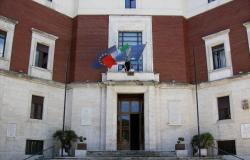“With the arrival of spring, the desire returns to start walking and exploring the beautiful country which, in every corner, generously offers traces of memory and often unpublished and unknown stories. Traveling on foot allows you to slowly discover the area and stop to listen to many minor voices that have made the history of Italy.
For this reason, the Compagnia dei Cammini proposes for the spring new paths and little-known itineraries that tell of an unheard but courageous Italy like that of the lands of the Apennines which are being rebuilt, of the Karst, a border land in a mix of cultures but also witness to the great wars, the mining Sulcis and its community, the welcoming Calabria with its village of Riace. From 3 to 7 April we set off with La Compagnia dei Cammini for a journey in the footsteps of history in the land of the Karst in Friuli, a border place with a harsh and sweet charm but also of memory for the Istrian refugee camps, the foibe, the trenches and bunkers from the First and Second World Wars. The medium-level route starts from small Duino to go towards Trieste, passing through the Rilke Path, a fantastic terrace overlooking the sea where the Bohemian poet composed his Elegies. You will arrive at the Mithraeum and the mythical springs of the Timavo River, the mysterious watercourse that sinks near the Caves of San Canzian, in Slovenia, and flows underground for about 40 km before re-emerging a few steps from the Adriatic Sea.
From there, with your head in Central Europe and your belly in the Balkans, you enter the plateau, encountering mountains that are not mountains, lush and desolate lands, thickets of downy oaks, ash and black hornbeams, black pines that speak of the Austro Empire -Hungarian, inverted mountains (the so-called “sinkholes”), sinkholes, mysterious caves (including the Giant Cave, the largest visitable cavity in the world), trenches, bunkers and ancient refugee camps. We then continue in the Val Rosandra nature reserve, an enchanted place where the only surface watercourse in the entire Karst flows, and where the great Emilio Comici made his first climbs. Finally we arrive gently towards Trieste, the gateway between East and West, to say goodbye at the top of the Molo Audace, the ancient pier dear to Umberto Saba from which to admire Piazza Unità, the Borgo Teresiano, the Carso, the Adriatic.
Not a trek but a journey: a slow, thoughtful and joyful exploration of a territory that in a small patch of land but of many languages, cultures, gastronomies and stories that tells of legends, memories to be preserved, naturalistic peculiarities, unusual beauties, complexity , people who speak multiple languages and have lived under multiple flags, shy and above all welcoming people. In the same period in Calabria from 7 to 13 April there is another civil journey of the Compagnia dei Cammini among the welcoming villages, from Gerace to Riace. The itinerary passes through the villages of Gioiosa Jonica, Pazzano and Stilo, the route passes by the Serre regional natural park and the wide rivers that tear through the valleys.
Wonderful landscapes enriched by the colors of the Mediterranean scrub where the Ionian Sea, a few kilometers away, will be your adventure companion. A route which, in addition to the naturalistic and historical wonders, tells the story of splendid people who every day live in step with their neighbors in this land of a thousand resources. The final stage of the journey is, in fact, Riace with its helmsman Mimmo Lucano who has made a country in a state of depopulation a model of hospitality to be followed throughout the world. Land of the East in the West, Calabria hosted a crossroads of peoples who came from the sea, Greeks and Romans, Byzantines, Normans and, still, continues to do so. Perhaps “welcome” is congenital to this land, it is transmitted to its inhabitants who for centuries have guarded the anthropic and architectural testimonies of these peoples such as the splendid cathedral of Gerace, the precious Cattolica of Stilo and the hermitages, such as that of Sant’ Hilarion today lives with the hospitable hermit Frédéric Vermorel.
Then there are the villages which, like ships resting on headlands, dominate the strategic points in the hinterland and which today offer hospitality to those in need. And yet another journey into more recent history with the Cammino nelle Terre Mutate from 11 to 17 May which crosses the backbone of Italy: the Apennines. A path born from the intent of those who tried to do something for the places in central Italy that experienced the earthquake from Fabriano and Norcia. Walking brought people together and little by little a community was formed which grew until the realization of this journey, indeed of community.
So much beauty was lost in a few seconds, but so much was born in the following months and years, to be found in the stories of resistance of stubborn and passionate young and old. Precisely this beauty is at the center of the journey that is followed, in the first part, in six stages to give voice to those who have never abandoned those places or have returned in the most difficult moments to rebuild: the quiet of the Marche countryside, the marvelous Camerino with art and culture but still largely red zone; the arrival in Fiastra with its lake of ever-changing colours, the entrance to the Sibillini Mountains National Park; the mountain stages gliding on the lunar plateau of Macereto and its Sanctuary, which has always been a destination for pilgrimages; the small villages of Ussita and Visso, destroyed but capable of expressing an admirable desire to get back on their feet; and Campi and the other small hamlets of Norcia affected enormously, where you can find just as much drive and desire for rebirth. Apennine countries that are the soul of Italy, where traditions and peasant culture belong to who we are. On one side we have rubble, on the other beauty.
Finally, from 18 to 25 May with the Compagnia dei Cammini another historical route, that of the Brigands’ Path, to be completed in an inclusive version that brings together blind walkers and people without sensory difficulties who want to share the resources that everyone has to offer.
The itinerary between Lazio and Abruzzo, suitable for everyone, retraces the ancient roads of the brigands who fought against the invasion of the Savoys, the new masters who arrived from the North who had increased taxes tenfold on people who were already suffering from hunger and imposed the obligation of the draft to people who could not free themselves from the need to work the land. A history of “marginality”, compared to the unification of Italy pursued over a century and a half ago, now being rediscovered, as are the very small villages you pass through. We start from the L’Aquila municipality of Sante Marie towards the town of Santo Stefano and then cross the border between western Marsica and Cicolano.
From Nesce you arrive at the charming village of Cartore, once the base of the gang of bandits of the same name, with an excursion to Lake Duchessa (1,788 m), set in one of the most beautiful settings of the central Apennines, within the Reserve homonymous. We continue the journey crossing the border between Cicolano and Marsica again to reach Rosciolo, Scurcola and close our circle in Sante Marie. In the small villages you encounter the hospitality of the few people with the opportunity for an intense and authentic encounter with these lands”. Walking Company






